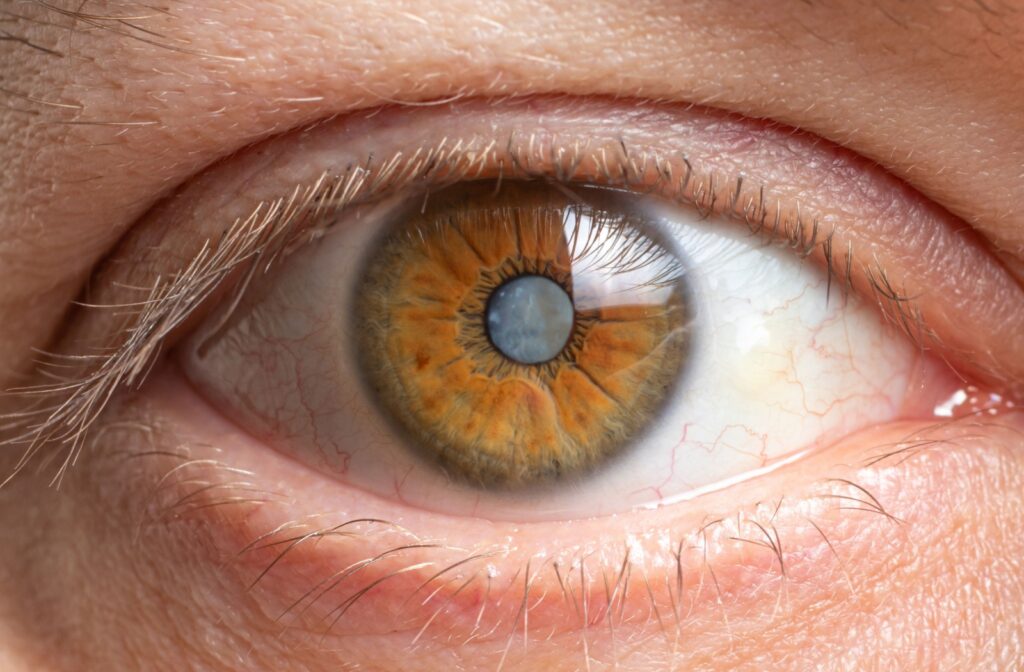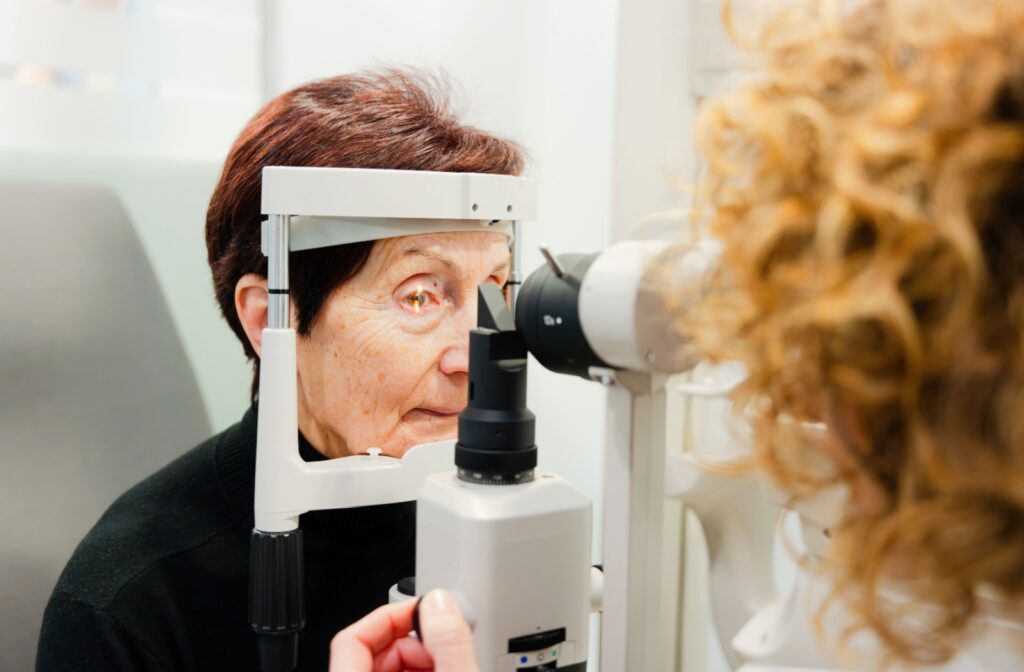Noticing changes in your vision can be unsettling, and one common condition that affects many people as they age is cataracts. While cataracts may start small and go unnoticed at first, there are subtle signs that can indicate their presence. Blurry vision, haloes around lights, poor night vision, faded or yellowing colours, and frequent prescription changes are common first signs of cataracts.
Eventually, cataracts can affect your daily life. The good news is, your eye doctor can review effective options like cataract surgery to help you maintain clear vision.
What Are Cataracts?
Cataracts occur when the lens of your eye becomes cloudy. The lens is a transparent, flexible structure situated directly behind your iris (the coloured part of your eye). Its job is to help focus light on the retina, creating sharp, clear images. When cataracts form, the lens becomes cloudy, and everything starts to look blurry or dim as if you’re trying to see through a foggy window.
Cataracts don’t form overnight. They develop slowly over time, often taking years before they significantly affect your vision. And while they’re most common in older adults, younger people aren’t entirely off the hook. Other factors can increase the likelihood of cataracts at any age.
What Causes Cataracts?
Cataracts are typically caused by aging, but that’s not the whole story. Other causes include:
- UV radiation: Too much sun exposure without adequate protection can increase your risk.
- Family history: If your parents or grandparents had cataracts, you’re at a higher risk, too.
- Eye injuries: Trauma to the eyes can lead to cataract development.
- Chronic conditions: Illnesses like diabetes are a known contributor.
- Lifestyle choices: Smoking and excessive alcohol consumption are also linked to cataracts.
A healthier lifestyle and regular eye exams can go a long way in detecting cataracts early or reducing your risk of developing them.
The Early Signs & Symptoms of Cataracts
Cataracts start subtly, and you might initially dismiss the signs as occasional eye tiredness or changes in your prescription. But here are the key early symptoms to watch for:
- Blurred vision: Things may start looking hazy or out of focus, even when you’re wearing your glasses or contacts.
- Difficulty with night vision: Lights may seem glaring, or headlights from other cars might cause discomfort.
- Haloes around lights: You may start noticing a ring or glare around lights that didn’t seem to be there before.
- Faded or yellowed colour perception: You may feel that colours appear duller or less vibrant.
- Frequent prescription changes: If you’ve felt like you’re constantly upgrading your glasses strength, cataracts might be behind it.
Recognizing these signs early could mean the difference between minimal disruption and significant visual impairment.

Can Cataracts Cause Blindness?
Eventually, cataracts can lead to blindness if left untreated. But the good news is that this kind of vision loss is reversible.
Cataracts progress slowly, but as the cloudiness worsens, your vision will become less functional over time. Tasks such as reading, recognizing faces, or even moving around safely may become difficult. But cataracts don’t have to reach this stage. Regular eye checkups and early intervention can help maintain your vision.
How Are Cataracts Treated?
Treating cataracts is a highly effective process, and the great news is that vision can often be restored with the right approach.
If cataracts are caught early and are not significantly interfering with your daily activities, your doctor may recommend adjustments such as stronger glasses, improved lighting, or anti-glare sunglasses. These simple changes can help manage mild symptoms.
But when cataracts begin to affect your quality of life—making it hard to read, drive, or see clearly—surgery is typically the best option. Cataract surgery is a common and safe procedure where the clouded lens is replaced with a clear, artificial lens called an intraocular lens (IOL).
Your eye doctor will guide you through the treatment options and help determine the best course of action based on your specific needs.
What to Expect from Cataract Surgery
Cataract surgery might sound intimidating, but it’s one of the safest and most common procedures in the world. During the surgery, the cloudy lens is removed and replaced with a clear IOL. Here’s what you need to know:
- Quick procedure: Most surgeries take about 10 to 15 minutes.
- Painless: Topical anesthesia is used to numb your eyes during the procedure.
- Fast recovery: Vision often starts improving within a few days post-surgery, with full recovery in 4 weeks.
Why Early Detection Matters
Detecting cataracts early often means more options, less progression, and better overall outcomes. The earlier they’re identified, the longer you can stave off the need for surgery.
Early detection also means healthier eyes overall. Plus, old habits die hard, and the sooner you start wearing sunglasses or improving your nutrition, the more you’ll be protecting your future vision.
Protect Your Vision with Willoughby Doctors of Optometry
If you think you might have cataracts or want to stay ahead on eye health, the team at Willoughby Doctors of Optometry are here to guide you every step of the way. We’re passionate about protecting your vision and helping you enjoy life to the fullest.Book an eye exam today to find out where your eye health stands. Together, we can create a plan to keep your eyes in tip-top shape for years to come.











